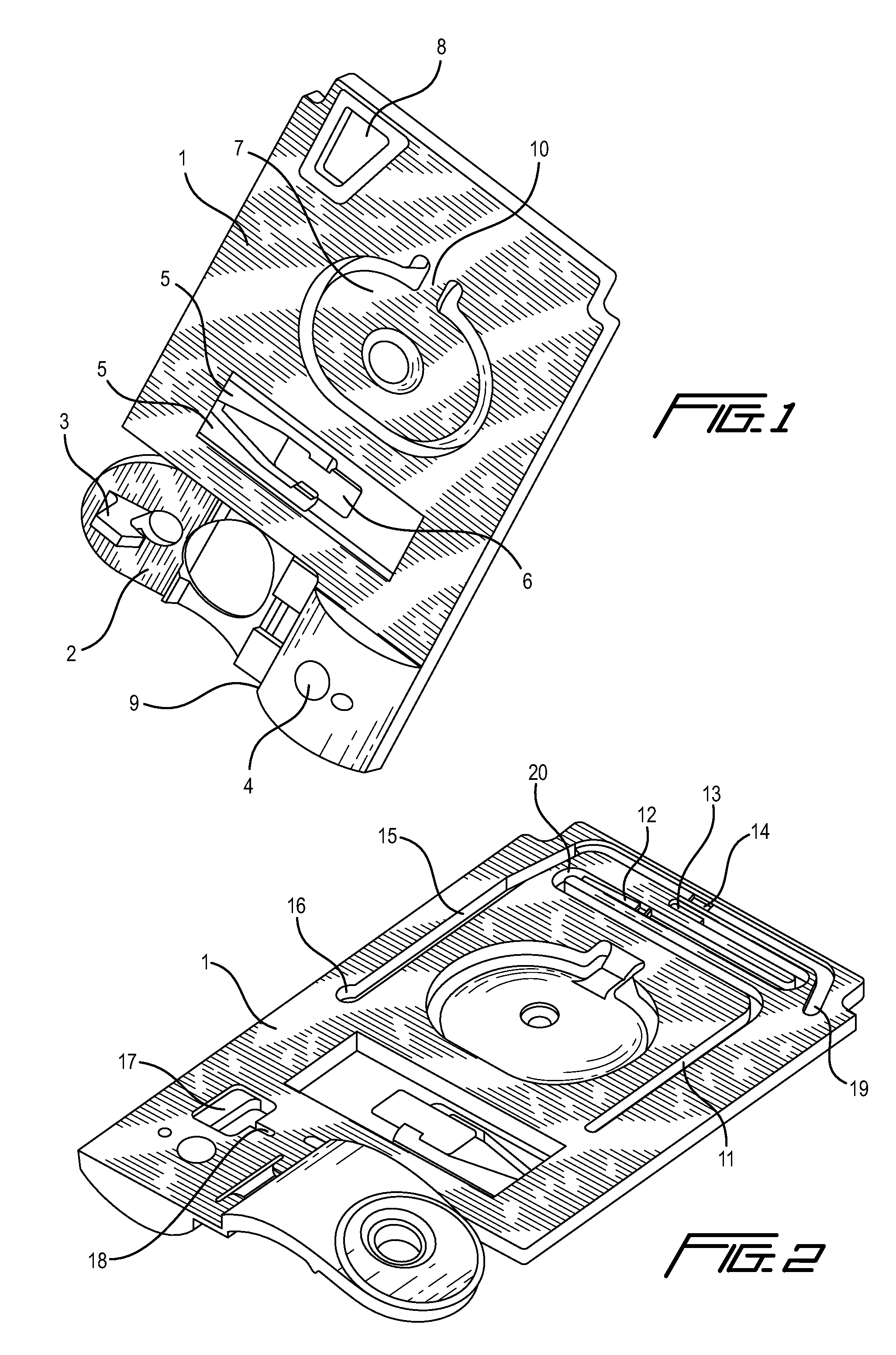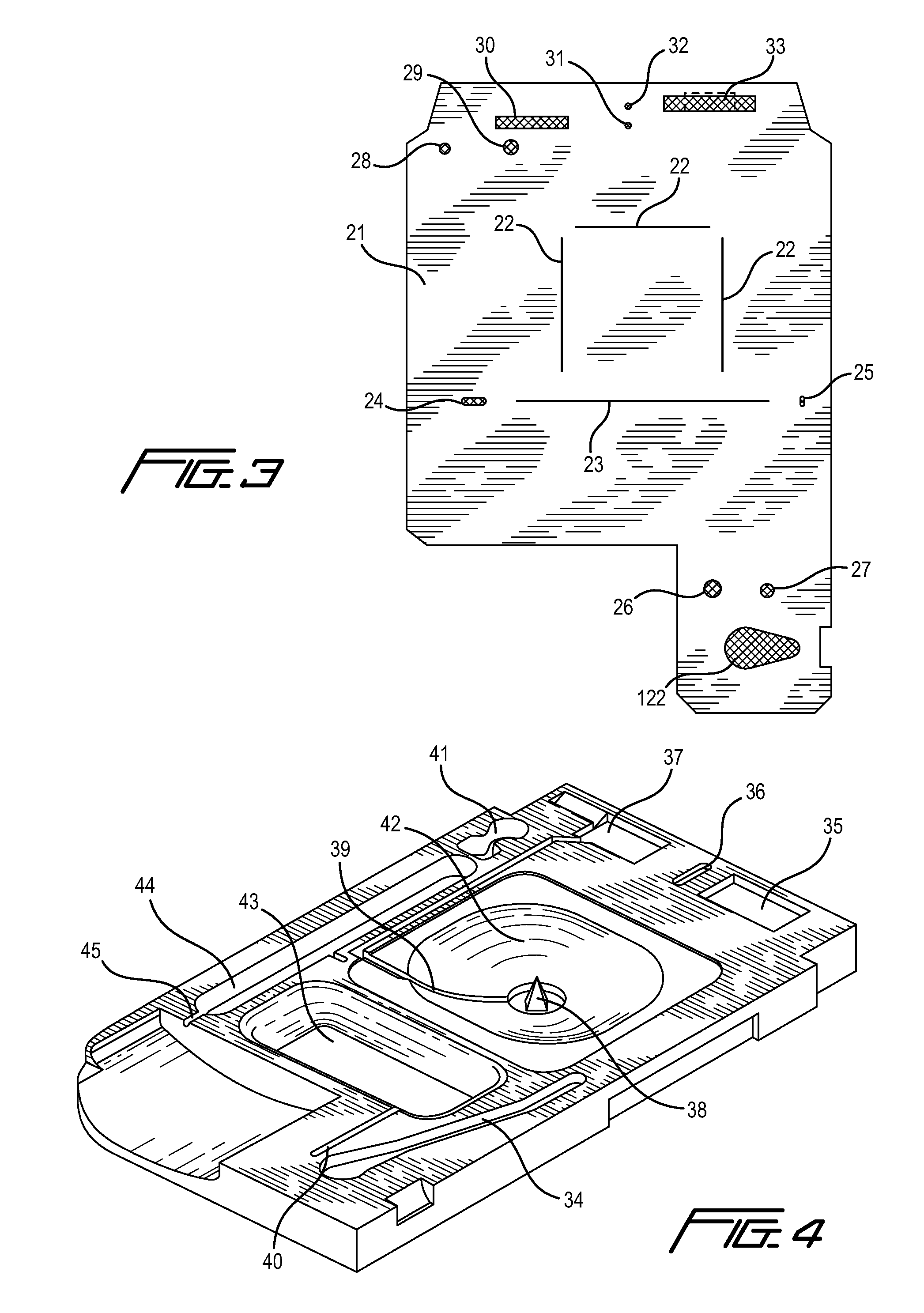Immunoassay device with immuno-reference electrode
a technology of immunoreference and immunoassay, which is applied in the direction of biomass after-treatment, instrumentation, suspension, etc., can solve the problems of variability of fluid test parameters from cartridge to cartridge, increase the cost of analysis of laboratory testing, and adverse to the condition or prognosis of patients, so as to increase the ionic strength of the sample and reduce interference
- Summary
- Abstract
- Description
- Claims
- Application Information
AI Technical Summary
Benefits of technology
Problems solved by technology
Method used
Image
Examples
example 1
[0180]Referring now to FIG. 7, which illustrates the principle of an amperometric immunoassay according to specific embodiments of the present invention for determination of troponin I (TnI), a marker of cardiac function. A blood sample, for example, is introduced into the sample holding chamber of a cartridge of the present invention, and is amended by a conjugate molecule comprising alkaline phosphatase enzyme (AP) covalently attached to a polyclonal anti-troponin I antibody (aTnI) 71. This conjugate specifically binds to the TnI, 70, in the blood sample, producing a complex made up of TnI bound to the AP-aTnI conjugate. In a capture step, this complex binds to the capture aTnI antibody 72 attached on, or close to, the immunosensor. The sensor chip has a conductivity sensor which is used to monitor when the sample reaches the sensor chip. The time of arrival of the fluid can be used to detect leaks within the cartridge: a delay in arrival signals a leak. The position of the sample...
example 2
Method of Use of a Cartridge
[0199]An unmetered fluid sample is introduced into sample chamber 34 of a cartridge according to claim 1, through sample entry port 4. Capillary stop 25 prevents passage of the sample into conduit 11 at this stage, and conduit 34 is filled with the sample. Lid 2 or element 200 is closed to prevent leakage of the sample from the cartridge. The cartridge is then inserted into a reading apparatus, such as that disclosed in U.S. Pat. No. 5,821,399 to Zelin, which is hereby incorporated by reference. Insertion of the cartridge into a reading apparatus activates the mechanism which punctures a fluid-containing package located at 42 when the package is pressed against spike 38. Fluid is thereby expelled into the second conduit, arriving in sequence at 39, 20, 12 and 11. The constriction at 12 prevents further movement of fluid because residual hydrostatic pressure is dissipated by the flow of fluid via second conduit portion 11 into the waste chamber 44. In a se...
example 3
Method of Use of a Cartridge
[0208]Use of a cartridge with a closeable valve, preferably located between the sensor chamber and the waste chamber, is herein illustrated by a specific embodiment in which the concentration of HCG is determined within a blood sample, which is introduced into the sample chamber of said cartridge. In the following time sequence, time zero (t=0) represents the time at which the cartridge is inserted into the cartridge reading device. Times are given in minutes. Between t=0 and t=1.5, the cartridge reading device makes electrical contact with the sensors through pads 91, 93, 95, and 97, and performs certain diagnostic tests. Insertion of the cartridge perforates the foil pouch introducing fluid into the second conduit as previously described. The diagnostic tests determine whether fluid or sample is present in the conduits using the conductivity electrodes; determine whether electrical short circuits are present in the electrodes; and ensure that the sensor...
PUM
| Property | Measurement | Unit |
|---|---|---|
| diameter | aaaaa | aaaaa |
| diameter | aaaaa | aaaaa |
| diameter | aaaaa | aaaaa |
Abstract
Description
Claims
Application Information
 Login to View More
Login to View More - R&D
- Intellectual Property
- Life Sciences
- Materials
- Tech Scout
- Unparalleled Data Quality
- Higher Quality Content
- 60% Fewer Hallucinations
Browse by: Latest US Patents, China's latest patents, Technical Efficacy Thesaurus, Application Domain, Technology Topic, Popular Technical Reports.
© 2025 PatSnap. All rights reserved.Legal|Privacy policy|Modern Slavery Act Transparency Statement|Sitemap|About US| Contact US: help@patsnap.com



